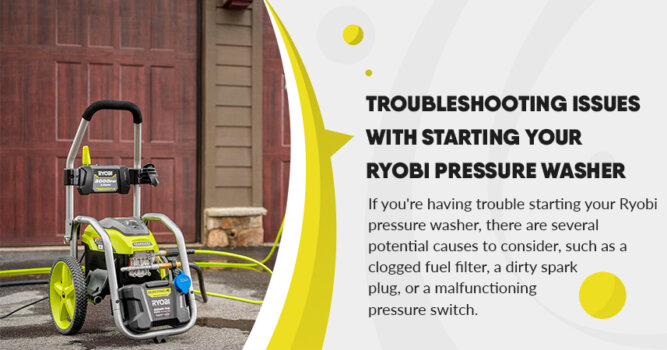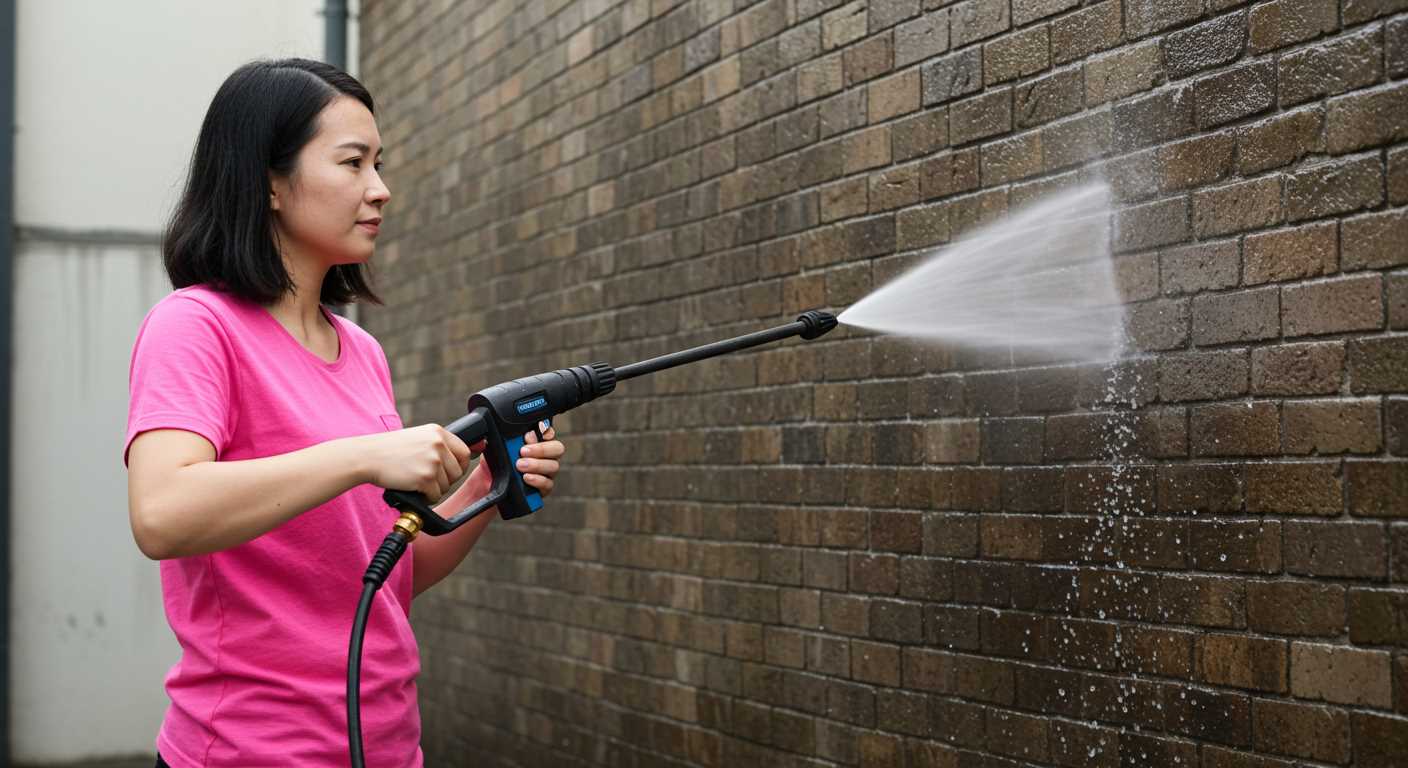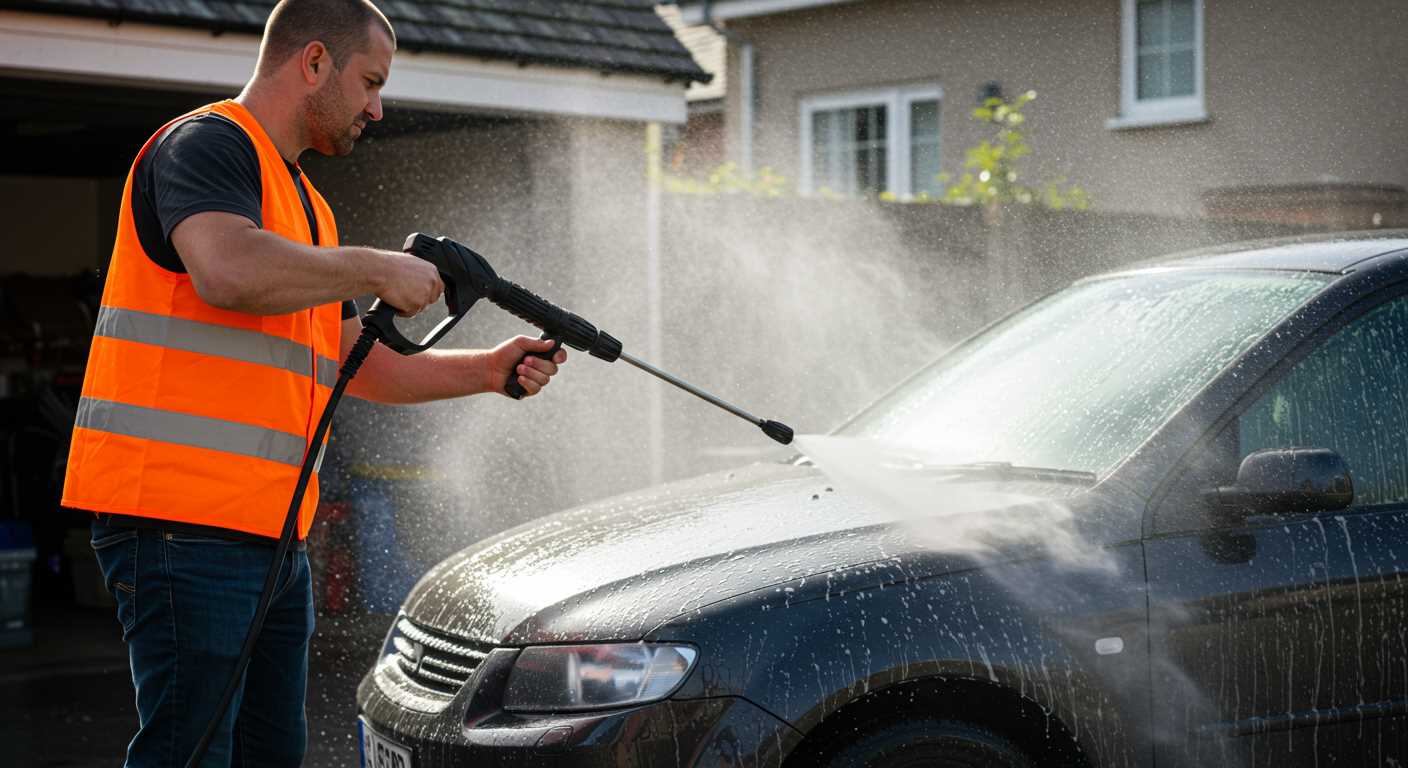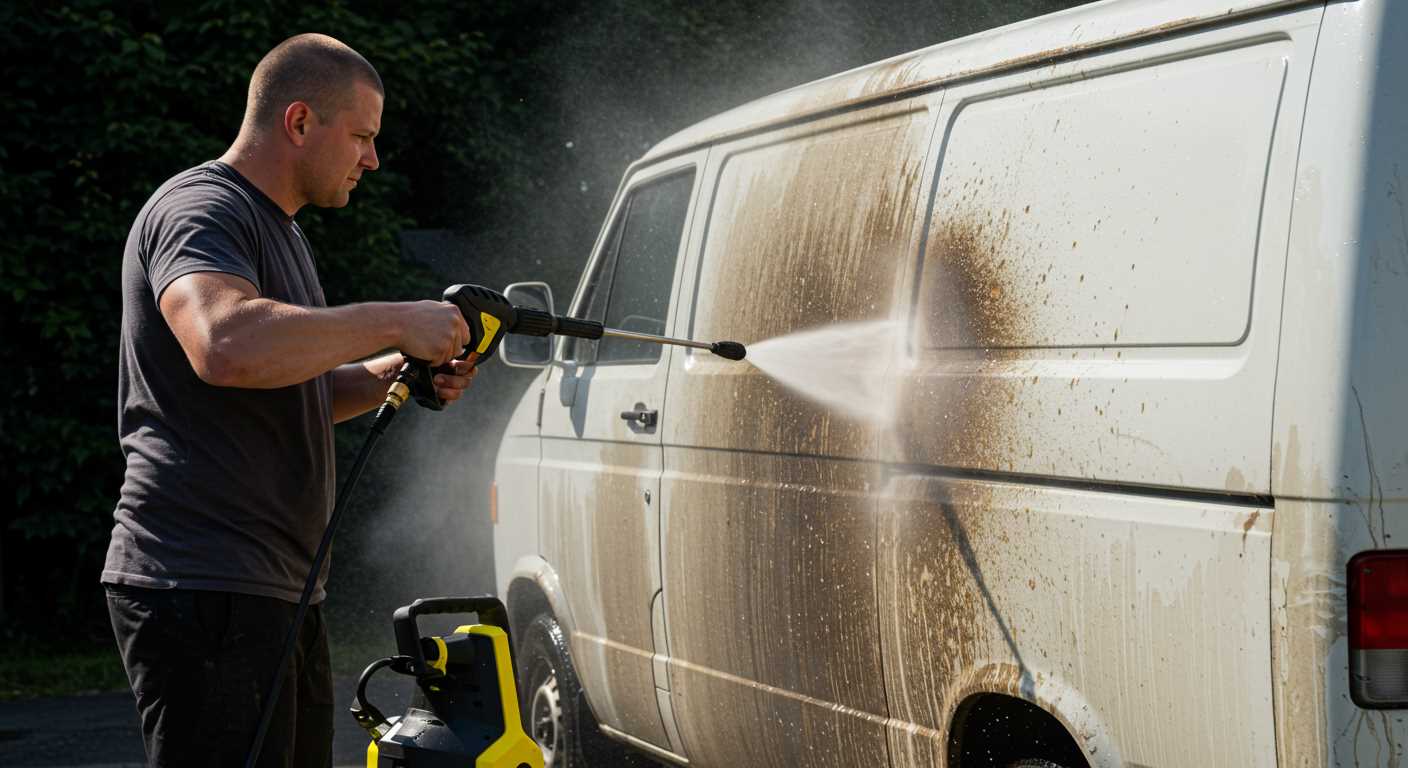



Pressure washers are an essential tool for both homeowners and professionals, providing the ability to efficiently clean a wide range of surfaces. However, like any mechanical device, they can encounter occasional difficulties. One frequent issue that users may face with their Ryobi pressure washers is difficulty starting the equipment.
There may be various underlying causes that could be responsible for this issue with starting, but it is crucial to investigate and diagnose the problem so that the appropriate solution can be found.
One possible reason for the starting problem could be a carburetor that is clogged or dirty. The carburetor is an essential part of the pressure washer’s engine, as it is responsible for combining air and fuel to create the necessary combustion for starting and operating the machine. If the carburetor becomes clogged or dirty, it can impede the proper flow of air and fuel, which can prevent the engine from starting.
A faulty spark plug could be another common reason for starting difficulties. The spark plug’s role is to ignite the mixture of air and fuel in the cylinder, initiating the necessary combustion to start the engine. Should the spark plug be worn out, dirty, or damaged, it may not produce a strong enough spark to ignite the fuel, resulting in challenges when attempting to start the pressure washer.
In addition to these potential causes, other factors such as a malfunctioning ignition switch or an issue with the fuel supply might also be to blame for starting problems. By identifying and comprehending these potential causes, users can commence troubleshooting and apply the appropriate remedies to restore the smooth operation of their Ryobi pressure washer once again.
This post aims to address typical problems that Ryobi pressure washer owners may face when starting their machines and offers effective troubleshooting techniques to resolve them. By adhering to these instructions, users can ensure a reliable and efficient start for their pressure washers.
Power Supply
A common problem that can impact the starting of your Ryobi pressure washer is an issue with the power supply. If the pressure washer is not receiving adequate power, it may fail to start correctly or not start at all.
One solution to this problem is to ensure that the pressure washer is connected to a functioning power outlet. Verify if the outlet is delivering power by plugging in another device or using a voltage tester. If the outlet is not supplying power, you may need to reset the circuit breaker or replace the fuse.
One potential reason for a power supply problem could be an defective extension cord. If you’re relying on an extension cord to power your pressure washer, ensure that it is the appropriate gauge and length for the machine’s power requirements. Using an insufficient or damaged extension cord can result in power loss and prevent the pressure washer from starting.
In addition, examine the power cord of the pressure washer for any signs of damage or frayed wires. If the cord is compromised, it may need to be fixed or substituted to ensure that the pressure washer receives the required power.
Occasionally, the power source problem could be associated with the pressure washer’s battery. Ensure that the battery for your Ryobi pressure washer’s ignition is completely charged and in excellent condition if it operates on a battery. If the battery is feeble or defective, it may be necessary to substitute it so that the pressure washer can start functioning correctly.
Fuel Problems
Dirty or Aged Fuel
If your Ryobi pressure washer is experiencing difficulties with starting, it is possible that the issue lies with dirty or aged fuel. Over the course of time, fuel can become contaminated by debris or lose its efficiency. To address this concern, begin by emptying the tank of any old fuel and refilling it with new, pristine fuel. Additionally, it is advisable to inspect the fuel filter and replace it if required.
Blocked Fuel Line
One more problem related to fuel that can stop your Ryobi pressure washer from starting is a fuel line that is obstructed. If there is a blockage or obstruction in the fuel line, fuel may not be able to flow to the engine correctly. To tackle this issue, inspect the fuel line for any indications of blockages or harm. If you identify any problems, attempt to clean the fuel line or substitute it if needed.
Fuel Solenoid Failure
When it comes to starting issues with your Ryobi pressure washer, one possible cause could be a faulty fuel solenoid. This vital component is responsible for regulating the fuel flow into the carburetor. If it malfunctions, it can prevent the engine from starting. If you suspect that the fuel solenoid is the culprit, it’s advisable to seek assistance from the manufacturer or a qualified technician who can diagnose and resolve the problem.
Insufficient Fuel Pressure
If your pressure washer is still having trouble starting, it’s possible that the fuel pressure is not adequate. This may be due to various factors, such as a faulty fuel pump or a clogged fuel filter. To address this issue, you should check the fuel pressure and make sure it meets the manufacturer’s recommended levels. If the fuel pressure is too low, you may need to replace the fuel pump or clean/replace the fuel filter.
Incorrect Fuel Mixture
If the fuel mixture in your Ryobi pressure washer is incorrect, it can cause starting issues. Engine performance can be affected if you use the wrong ratio of fuel to oil or if you use fuel with a higher ethanol content than recommended. To prevent any problems when starting your pressure washer, make sure to follow the manufacturer’s guidelines for fuel and oil mixing and use fuel with the proper amount of ethanol.
Spark Plug Issues
If you are having trouble starting your Ryobi pressure washer, one common problem to consider is a defective spark plug. The spark plug is responsible for igniting the fuel mixture in the engine’s combustion chamber, and if it is not working properly, the engine may have difficulty starting or may not start at all.
There are several signs that may indicate a spark plug problem. If you notice that the engine is misfiring, producing a weak spark, or not starting, it could be due to a faulty spark plug. Additionally, if the spark plug is covered in black carbon deposits or if the electrode is worn out, it may need to be replaced.
To diagnose issues with the spark plug, begin by removing it from the engine. Examine the spark plug for any indications of harm or wear. If the spark plug appears to be damaged, corroded, or coated in carbon deposits, it is probably the source of the starting issue.
If it is necessary to replace the spark plug, it is essential to use the proper spark plug for your specific Ryobi pressure washer model. Refer to the user manual or reach out to a Ryobi dealer for guidance in locating the correct spark plug. Once you have obtained the new spark plug, carefully reinsert it into the engine, making sure to tighten it appropriately.
Regularly maintaining the spark plug is crucial in avoiding starting problems. It is advised to frequently clean and examine the spark plug, and replace it if needed. Furthermore, adhering to the maintenance schedule recommended by the pressure washer manufacturer can help prevent spark plug complications and guarantee the best possible performance.
Carburetor Troubles
If your Ryobi pressure washer is experiencing difficulties starting, it might be because of problems with the carburetor. The carburetor plays an essential role in delivering fuel to the engine, and any issues with it can impact the starting process.
Unclean or blocked carburetor: As time passes, the carburetor can accumulate dirt or debris, obstructing the proper fuel flow. To resolve this, you can attempt to clean the carburetor by removing it and soaking it in a solution of carburetor cleaner. Utilize a small brush to remove any grime or residue before reinstalling it.
Malfunctioning carburetor float: The carburetor float controls the fuel flow into the carburetor bowl. If the float is defective or stuck, it can result in an inadequate fuel supply, making it challenging to initiate the pressure washer. Inspect the float for any indications of damage or wear, and replace it if necessary.
Improper carburetor adjustments: The carburetor must be accurately adjusted for the engine to start and function smoothly. If the adjustments are not correct, it can cause problems with starting. Refer to the owner’s manual or seek professional assistance to ensure the carburetor is adjusted correctly.
Problems with fuel mixture: Achieving a balanced fuel mixture in the carburetor is crucial for optimal performance. If the fuel mixture is too rich, it can impede the starting process. Conversely, if the fuel mixture is too lean, it can result in rough engine operation or failure to start. Make adjustments to the fuel mixture as per the manufacturer’s guidelines.
Obstructions in the fuel line or filter: A fuel line or filter that is obstructed can restrict the fuel flow to the carburetor, causing starting difficulties. Inspect the fuel line and filter for any blockages or debris. Clean or replace them when necessary to ensure proper fuel flow.
To sum up, when it comes to resolving starting problems with your Ryobi pressure washer, troubleshooting may include investigating potential issues with the carburetor. You can try cleaning or replacing a dirty carburetor, examining the float, making adjustments to the carburetor settings, balancing the fuel mixture, and ensuring that the fuel line and filter are clear. These steps can all contribute to resolving carburetor problems and enhancing the starting performance of your pressure washer.
Priming the Pump
If your Ryobi pressure washer is experiencing difficulty starting, one potential issue could lie in the process of priming the pump. Properly priming the pump is a crucial step in achieving a smooth start for your pressure washer.
What is priming?
Priming refers to the act of removing air from the pump and replacing it with water. Failing to prime the pump correctly can impede the pump’s ability to generate the necessary pressure for the machine’s startup.
Steps for priming the pump:
- Check the water supply: Ensure that there is an adequate amount of water in the water supply source. If the water supply is too low, the pump may struggle to prime effectively.
- Remove the hoses: Take off any hoses that are connected to the pump.
- Fill up the pump with water: Use a garden hose to slowly fill the pump with water through the inlet port until water starts coming out of the outlet port.
- Attach the hoses again: Connect the hoses back to the pump.
- Open the water supply: Turn on the water supply and let it run for a few seconds to make sure that water is flowing steadily.
Extra suggestions:
- Use a bucket: If the water supply is too far away from the pump, you can manually prime the pump by using a bucket filled with water.
- Inspect the hoses: Check the hoses for any bends or obstructions that could prevent proper water flow.
- Release the trigger gun: Prior to initiating the pressure washer, release the trigger gun to enable unimpeded water flow throughout the system.
To effectively prime the pump and guarantee a consistent water flow, you can resolve any starting difficulties with your Ryobi pressure washer and restore its seamless operation.
Engine Overheating
The issue of engine overheating is a common one that Ryobi pressure washers may encounter. This problem can lead to engine damage and negatively impact its performance. Here are a few potential reasons for and solutions to engine overheating:
Lack of Sufficient Airflow
Inadequate airflow is one possible cause of engine overheating. This can happen when the air filter becomes dirty or clogged. A dirty air filter restricts the flow of air to the engine, causing it to run hotter than desired. To resolve this issue, it is necessary to remove the air filter and thoroughly clean it. If the filter is excessively dirty or damaged, it should be replaced with a new one.
Low Oil Level
Insufficient oil levels can also cause the engine to overheat. When there isn’t enough oil, the engine isn’t properly lubricated, which leads to greater friction and heat production. To prevent this, it’s important to regularly check the oil level using the dipstick and add oil as needed. It’s also essential to use the recommended type of oil and follow the manufacturer’s guidelines for optimal performance.
Blocked Cooling Fins
Over time, the cooling fins on the engine can get clogged with dirt, debris, or grease, which reduces their effectiveness in cooling the engine. To ensure efficient engine cooling, it is important to regularly clean the cooling fins. This can be done using a brush or compressed air to remove any obstructions. By performing regular maintenance and cleaning of the cooling system, you can prevent the engine from overheating.
Excessive Load
Using the pressure washer at a high capacity for an extended duration can also result in the engine becoming too hot. If you are utilizing the pressure washer for tasks that require a lot of power, it is advisable to give the engine regular breaks to allow it to cool down. This will help prevent it from overheating and prolong the overall lifespan of the engine.
If the previously mentioned suggestions do not resolve the problem of the engine overheating, it is recommended to seek the assistance of a professional technician for further inspection and repairs. Neglecting the issue of engine overheating can lead to significant damage and expensive repairs.
Air Filter Blockage
If you are experiencing difficulties starting your Ryobi pressure washer, one possible problem to consider is a blockage in the air filter. The primary function of the air filter is to prevent dirt, dust, and debris from entering the engine. However, over time, it can become congested, impeding the airflow.
A blocked air filter can lead to an inefficient mixture of air and fuel, causing starting problems for the engine. In addition, it can result in a decrease in engine power and overall performance.
To check for a blockage in the air filter, locate the air filter housing on your pressure washer. Remove the housing and examine the filter for any indications of dirt or debris accumulation. If the filter appears dirty or clogged, it is crucial to clean or replace it.
To effectively clean the air filter, softly tap it against a solid surface in order to eliminate any loose particles and dirt. In instances where the filter becomes excessively obstructed, it might be necessary to acquire a new one. Refer to the guidelines provided by the manufacturer to determine the appropriate replacement filter for your particular model.
Consistently examining and either cleansing or exchanging the air filter can aid in preventing any starting complications and ensure that your Ryobi pressure washer functions seamlessly.
Mechanical Malfunctions
1. Engine Overheating
If your Ryobi pressure washer is experiencing difficulty with its initial startup, this may be attributed to the engine overheating. This situation can arise when the engine is being exerted to an excessive extent or when there is an issue with the cooling system. To rectify this matter, as a first step, ensure that the engine is not being overburdened by diminishing the workload or modifying the pressure settings. Additionally, inspect the cooling system for any obstructions or leaks. Cleaning or substituting the air filter is also advisable, as a contaminated filter can contribute to overheating.
2. Starter Cord Jamming
If your Ryobi pressure washer’s starter cord is getting stuck and the engine won’t start, there could be a problem with the recoil starter mechanism. This might happen because the starter spring is either damaged or worn out. Take apart the recoil starter assembly and examine the starter spring for any indications of damage. If you notice any damage, you will need to replace the spring.
3. Fuel Supply Problems
In the event that your Ryobi pressure washer fails to start or experiences a brief operation and then stalls, it is possible that there is an issue with the fuel supply. It is advisable to inspect the fuel tank to ensure that it contains an adequate amount of fuel. If the fuel tank is either empty or running low, it would be prudent to replenish it with fresh gasoline. Additionally, it would be wise to examine the fuel lines and fuel filter in order to identify any potential obstructions or blockages. If such issues are detected, it would be necessary to cleanse or replace these vital components as needed.
4. Ignition System Issues
If your Ryobi pressure washer’s engine won’t start, the issue may be related to the ignition system. Please inspect the spark plug to ensure it is free of dirt and damage. In the event that the spark plug is dirty or worn, please proceed with replacing it. Moreover, kindly examine the ignition coil and ignition switch for potential defects. If any parts of the ignition system are found to be faulty, they will require either repair or replacement.
5. Carburetor Problems
Starting issues with your Ryobi pressure washer may also be caused by a faulty carburetor. Inspect the carburetor for any blockages or accumulation of dirt. Ensure a comprehensive cleaning of the carburetor is carried out using a carburetor cleaner and a small brush. If cleaning the carburetor fails to resolve the problem, it might be necessary to either rebuild or replace it. For instructions on carburetor maintenance or replacement, refer to the user manual or seek guidance from a professional.
FAQ
What are the possible causes for my Ryobi pressure washer’s failure to start?
There are a number of factors that may contribute to the failure of your Ryobi pressure washer to start.
What should I do if my Ryobi pressure washer starts but then shuts off immediately?
If your Ryobi pressure washer starts and then quickly turns off, it could be due to an issue with the fuel flow. It is important to check if the fuel filter is free of any dirt or debris that may be obstructing it. Additionally, take a look at the carburetor to ensure it is properly adjusted. If these suggested measures do not resolve the issue, it would be advisable to have the pressure washer examined by a qualified technician for a more thorough evaluation.
My Ryobi pressure washer’s engine is turning over but it won’t start. What could be causing this?
If the engine is cranking but the Ryobi pressure washer refuses to start, there could be an issue with the ignition system. Inspect the spark plug to ensure it is generating a spark. If not, attempt to clean or replace it. Additionally, it is advisable to examine the ignition coil and ignition switch for any potential malfunctions.
What should I check if my Ryobi pressure washer won’t start after sitting unused for a long time?
If your Ryobi pressure washer does not start after being left unused for an extended period of time, the primary reason could be due to the presence of stale fuel. In order to resolve this issue, it is necessary to drain the previous fuel from the tank and fill it with fresh fuel. Additionally, it might be beneficial to clean or even replace the spark plug, as it could have become dirty or corroded as a result of the old fuel. By following these steps, your pressure washer should be able to start up effortlessly.
Why does my Ryobi pressure washer start but then stall under load?
If your Ryobi pressure washer starts but then stops when you put it under load, the primary reason for this issue is usually a blocked or dirty carburetor. Take out the carburetor and give it a thorough cleaning, focusing on the jets and passages. If cleaning the carburetor doesn’t resolve the problem, there could be a problem with the fuel pump or pressure regulator. It is advisable to have a professional inspect it.






.jpg)


